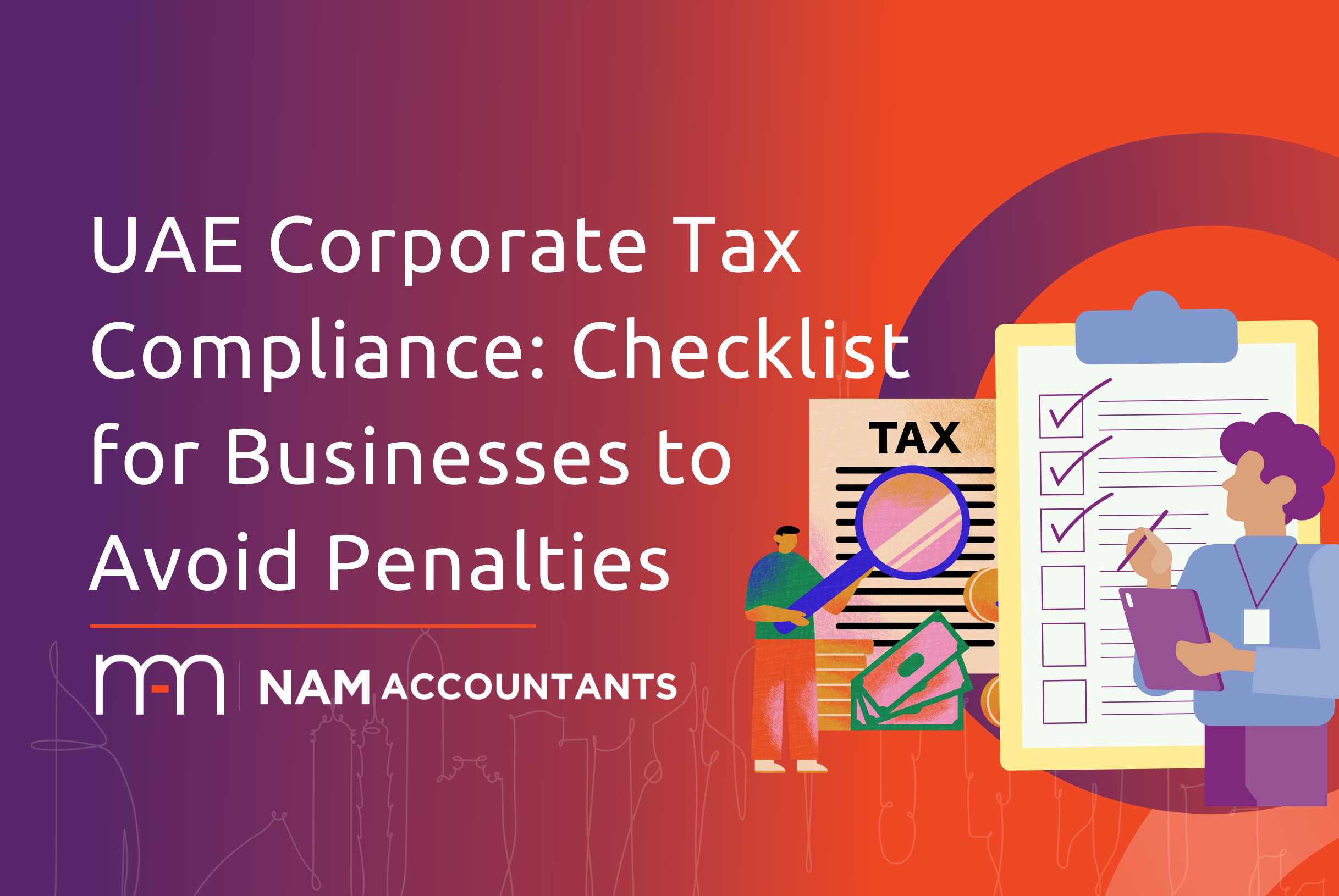The United Arab Emirates (UAE) has grown throughout time to become a global hub for enterprises looking for strategic development and profitable prospects. With its investor-friendly regulations, cutting-edge infrastructure, and dynamic economic landscape, the UAE continues to draw entrepreneurs and corporations from around the world. However, despite the allure of the UAE’s business environment, companies must manage the complexities of corporate tax compliance to avoid penalties and maintain long-term success. In this article, we will go over a complete checklist to help businesses avoid tax mistakes and maintain compliance standards in the UAE.
Understanding UAE Corporate Tax Framework:
In a recent move, the UAE imposed a 9% company tax on taxable income above AED 375000. Earlier in 2018, the UAE issued Federal Decree-Law No. 7 of 2017 on Tax Procedures, signaling a substantial shift in tax policy implementation. One of the most significant events was the introduction of the Value Added Tax (VAT) at a standard rate of 5% on January 1, 2018. With the changing tax landscape, businesses must be cautious and proactive in order to avoid penalties and protect their image.
UAE Corporate Tax Compliance Checklist:
-
Tax Registration:
- Determine tax obligations: Based on your business’s turnover, operations, and location, determine if it is subject to VAT or corporation tax requirements.
- Prompt registration: If your taxable supplies surpass the registration level, you must register for VAT with the Federal Tax Authority.
- Ensuring compliance with Emirate-level tax requirements: Understand the tax requirements specific to your company’s location, such as DIFC or ADGM.
-
Accurate Record-Keeping
- Maintain detailed records: Maintain accurate and thorough records of all financial transactions, invoices, and accounting documents in conformity with UAE tax legislation.
- Retention term: Maintain records for the necessary period of time, which is normally five years from the end of the tax period.
-
VAT Compliance:
- Invoice requirements: Issue VAT-compliant invoices for all taxable supplies, including mandatory elements including tax registration number, transaction value, and VAT amount.
- Timely VAT returns: To avoid fines, file VAT returns within the required dates, which are normally quarterly.
- Input tax recovery: Establish effective systems for tracking and recovering input tax paid on business expenses, according to compliance requirements.
-
Transfer Pricing Rules:
- The arm’s-length principle: Comply with transfer pricing requirements by ensuring that transactions between connected parties are priced at arm’s length and reflect market rates.
- Documentation requirements: Create and maintain transfer price documentation to support the justification for intercompany transactions and pricing techniques.
-
Comprehensive tax planning through experts:
- Get professional advice: Engage tax experts or consultants, such as NAM Accountants, who are knowledgeable with UAE tax legislation, to create tax-efficient methods that are consistent with your business goals.
- Structural issues: Assess the impact of corporate structures, including free zone establishments, on your tax liabilities and compliance duties.
-
Risk assessments and mitigation:
- Regular Assesment: Periodic reviews of business operations and transactions might help you identify potential areas of noncompliance or tax risk.
- Carry out remedial measures: Take proactive efforts to resolve identified risks and tighten internal controls in order to avoid future tax difficulties.
-
Stay Informed and Educated:
- Stay updated: Follow regulatory developments. Keep up with changes in UAE tax laws, rules, and guidelines to ensure continuing compliance and adaptation to changing needs.
- Training and awareness: Invest in employee training programs to raise understanding of tax compliance duties and develop a culture of adherence within the organization.
Navigating the UAE’s business tax landscape necessitates a proactive strategy and close attention to compliance standards. Businesses that follow the complete checklist provided above can protect themselves from potential penalties, improve tax efficiency, and support long-term growth in the UAE’s dynamic business climate. Remember, compliance isn’t just an issue of legal responsibility, but also a strategic imperative for sustaining trust, credibility, and long-term success in the competitive marketplace.























